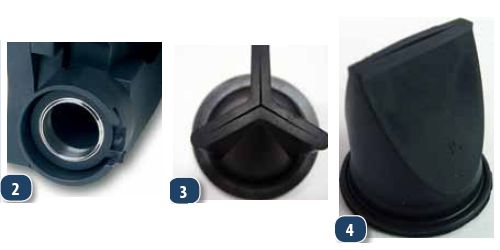
288
Subtle difference in which valves and pipes are used to fill and flush the bowl can add up to less odor, reduced water use, and less energy use over the long run.
1. The toilets had at least one check valve to prevent waste from re-entering the macerator. Most had two: one at the macerator discharge tube and the other at the tailpipe where the holding tank hose joined.
2. The flapper valve on the Planus Artic (also indicated in illustration at left) mates with a stainless-steel lip on the Planus Artic’s macerator discharge pipe.
3. & 4. The tricuspid valve (Jabsco) and the duckbill valve (Dometic) flex open with the force of water pressure, then close when the pressure is released.


































